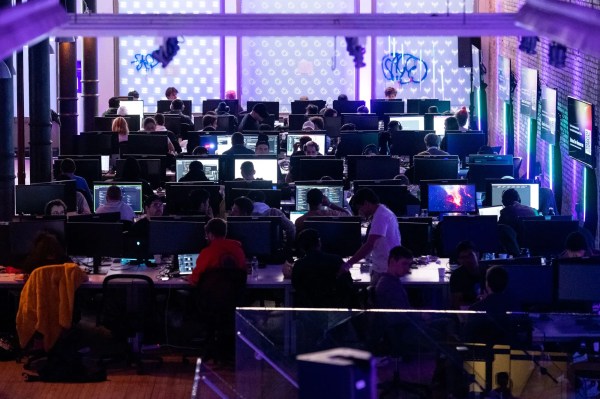After FTX collapsed, a number of crypto entities once tied to the bankrupt crypto exchange are trying to pick up the pieces and move forward. As for Solana — a prominent layer-1 blockchain that was backed by FTX and its outspoken founder, Sam Bankman-Fried — its co-founders see this downturn as an opportunity for its team and developers to build and ignore the noise.
“It’s just a time of immense fear, but there’s immense opportunity,” Raj Gokal, co-founder of Solana, said to TechCrunch. “There’s a lot of signal and a lot of noise.”
Developers in the space who weathered the last crypto market cycle see Solana’s ability to handle high levels of transaction throughput as an advantage over some other blockchains and remain bullish on the underlying technology more generally, Gokal explained. “They’re not just paying attention to what’s happening in the market. What they’re excited about is what they can build, and they’re still building it.
“A lot of them feel the urgency to be ready with their products [for] the next cycle so when that next market cycle comes, there will be a lot of new users trying to experiment with products in crypto and we expect that to happen in the next year.”
In general, decentralized finance (DeFi) has been “one of the core things we’re always focused on,” Anatoly Yakovenko, co-founder of Solana, said to TechCrunch. But under the hood, Solana is looking at expanding deeper into NFTs, gaming and other subsectors that all involve DeFi protocols and real-world use cases, he added.
Some examples Yakovenko highlighted include decentralized 5G cell network Helium or a decentralized map built by a crypto-enabled dash cam Hivemapper. However, Helium has been in the spotlight recently as it struggles to profit and questions arise about the founders’ motives.
“These are really cool disruptive things that are now tied to real-world activity,” Yakovenko said. “The difference between the last cycle and this one is that people still have the same crazy ideas that are going to disrupt everything, but they’re actually starting with products working; it’s not just a white paper anymore.”
These products are starting to get real-world benefits to normal consumers, too, not just those who are passionate about crypto or are super early adopters, Yakovenko added. “They’re just using it as a normal tool.”
Today, Solana is in the “very first inning” for finding use cases that take advantage of the blockchain’s performance, Gokal said.
“We’ve used the analogy before that it’s like when concrete was invented, they thought it was going to be best for concrete bricks,” Gokal said. “But really, you need people that can dream big enough to use concrete to create skyscrapers.”
But the baseline focus, for now, is on Solana-centric developers and users who “look at the hard times as a great opportunity to just jump in, in a contrarian way, and build for that next market cycle,” Gokal said. “That’s how Solana was started as well. We came together and got our initial funding in a bear market. It was right after the ICO boom and bust in 2018 and then we launched the network right in the heat of lockdowns and COVID.”
The concept of bear markets being a time to build isn’t new and makes sense more often than not. The people who come in for a quick buck, overvalued valuations and hype during a bull market often get washed out due to pressure, lack of runway or insufficient passion, among other things, during a bear market. “Building season” is a real thing, but which startups that launched during this period will succeed is yet to be determined.
About a month ago, Solana hosted its Breakpoint conference with a hacker house. The number of attendees at Breakpoint doubled to 3,600, Yakovenko said. Its hacker house program started at Breakpoint 2021 and there were 23 held this year, along with a total of six hackathons held since late 2020. All together in the hacker houses and hackathons, there were 64,000 participants and over 3,000 demos and submissions, according to a tweet from the blockchain. Its hacker house program started at Breakpoint 2021, and the number of registrations doubled in 2022, Yakovenko said.
“Despite this massive downturn in the market, we had almost twice as many folks show up,” Yakovenko said.
The vision for Solana has always been focused on making the blockchain cheaper and faster while getting engineers, high-frequency trading teams and big brands to build on the blockchain, Yakovenko said.
“I think we’re already moving forward and what’s really important to us is that we get new developers and new creators onboarded,” Yakovenko said. “That’s always been our flywheel to focus on teams and make sure that they build great products.”
